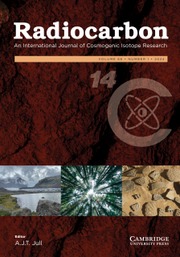Article contents
Reconstructing Human Subsistence Strategies During the Korean Neolithic: Contributions from Zooarchaeology, Geosciences, and Radiocarbon Dating
Published online by Cambridge University Press: 09 February 2016
Abstract
The Neolithic in Korea began around 10,000 BP and is the period when many substantial changes appear in the archaeological record. In particular, one of the important changes is from a subsistence strategy that relied primarily on hunted, fished, and collected food packages to a diet that by the beginning of the Bronze Age (∼3500 BP) saw intensive agriculture as the primary form of sustenance. This paper discusses current research on this topic, in addition to presenting a comprehensive list of raw accelerator mass spectrometry (AMS) data from Korean Neolithic sites, particularly data that only became available over the past several years.
- Type
- Archaeology of Eurasia and Africa
- Information
- Radiocarbon , Volume 55 , Issue 3: Proceedings of the 21st International Radiocarbon Conference (Part 2 of 2) , 2013 , pp. 1350 - 1357
- Copyright
- Copyright © 2013 by the Arizona Board of Regents on behalf of the University of Arizona
References
- 10
- Cited by


